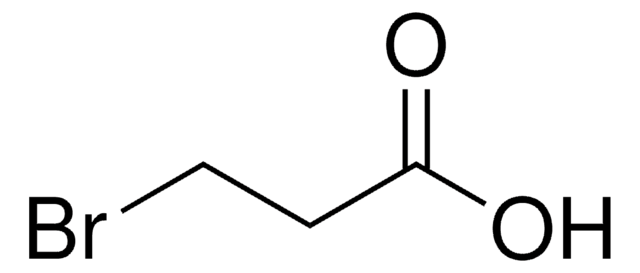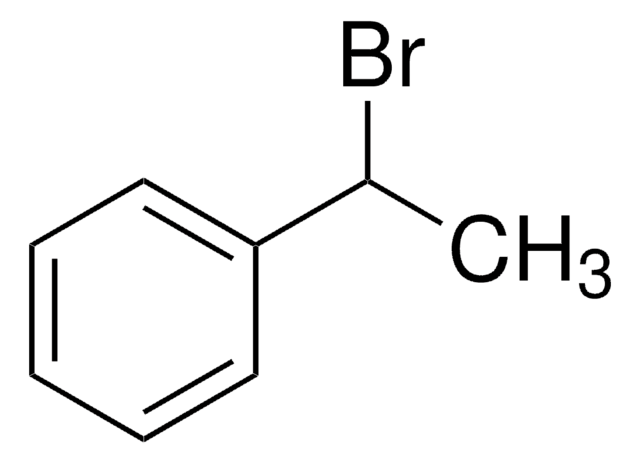おすすめの製品
品質水準
アッセイ
97%
形状
liquid
不純物
<3% 2-bromopropionamide
屈折率
n20/D 1.461 (lit.)
bp
68-69 °C/50 mmHg (lit.)
密度
1.55 g/mL at 25 °C (lit.)
官能基
bromo
nitrile
SMILES記法
CC(Br)C#N
InChI
1S/C3H4BrN/c1-3(4)2-5/h3H,1H3
InChI Key
PYNYHMRMZOGVML-UHFFFAOYSA-N
アプリケーション
2-ブロモプロピオニトリルは、アクリロニトリルの電子移動によって生じるアクチベーター(AGET、ATRP)を用いた原子移動ラジカル重合のイニシエーターとして用いられ、この反応にはイッテルビウム(Yb)を含む触媒が用いられました。
シグナルワード
Warning
危険有害性の分類
Acute Tox. 4 Oral - Eye Irrit. 2 - Flam. Liq. 3 - Skin Irrit. 2 - STOT SE 3
ターゲットの組織
Respiratory system
保管分類コード
3 - Flammable liquids
WGK
WGK 3
引火点(°F)
136.4 °F - closed cup
引火点(℃)
58 °C - closed cup
個人用保護具 (PPE)
Eyeshields, Faceshields, Gloves, type ABEK (EN14387) respirator filter
適用法令
試験研究用途を考慮した関連法令を主に挙げております。化学物質以外については、一部の情報のみ提供しています。 製品を安全かつ合法的に使用することは、使用者の義務です。最新情報により修正される場合があります。WEBの反映には時間を要することがあるため、適宜SDSをご参照ください。
毒物及び劇物取締法
劇物
消防法
第4類:引火性液体
第二石油類
危険等級III
非水溶性液体
Jan Code
308609-VAR:
308609-5G:4548173132785
308609-BULK:
この製品を見ている人はこちらもチェック
Jing Ma et al.
Materials science & engineering. C, Materials for biological applications, 32(6), 1699-1703 (2012-08-01)
Yb-based catalyst was used for the first time for atom transfer radical polymerization using activators generated by electron transfer (AGET ATRP) of acrylonitrile (AN) with 2-bromopropionitrile (BPN) as initiator, 2, 2'-bipyridine (bipy) as ligand, and tisn(II) bis(2-ethylhexanoate) (Sn(EH)2) as reducing
Breanne E Holmes et al.
Chemosphere, 187, 114-122 (2017-08-27)
The formation of disinfection by-products (DBPs) in drinking water occurs when chemical disinfectants such as chlorine and chloramine react with natural organic matter and anthropogenic pollutants. Some DBPs have been linked to bladder cancer and infertility; however, the underlying mechanism
Breanne E Holmes et al.
Environmental toxicology and chemistry, 38(5), 956-964 (2019-01-31)
Disinfection byproducts are formed during most drinking water treatment and presently number >800, some of which are implicated in human health outcomes including bladder cancer and infertility, with unknown mechanisms of action. In particular, it is not yet understood whether
ライフサイエンス、有機合成、材料科学、クロマトグラフィー、分析など、あらゆる分野の研究に経験のあるメンバーがおります。.
製品に関するお問い合わせはこちら(テクニカルサービス)















